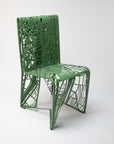
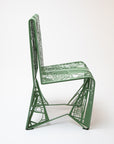
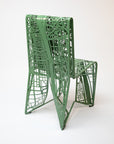
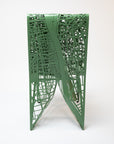
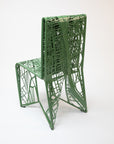
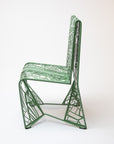
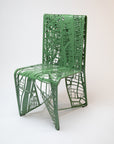
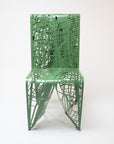
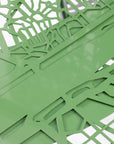
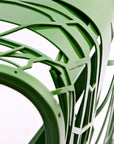
Aluminum Chair, Paris - Prototype (Reseda Green)
This is a one-of-a-kind early prototype. Prototypes are sold as-is and have imperfections from testing and display. They are not guaranteed to withstand regular use and are sold to be displayed as art.
This Aluminum Chair prototype features four maps showcasing how Paris has evolved over the past 1,600+ years. This is one of the first full prototypes, and represents the location of the Tuileries Gardens, where Ted Galante conceptualized the idea for this collection. This prototype is finished in Reseda Green.
Material: Aluminum
Dimensions: 18½in L x 18in W x 36¾in H
Weight: 15.5lbs
Color: Reseda Green
Prototypes are one-of-a-kind pieces that were handcrafted during our earliest days of design development. They are truly unique, fine art objects that can be shipped to your desired location upon ordering. Your lead time will be determined upon finalizing logistics.
Made From Four Layers of Historical Maps
OCCUPYING OVER 1,600 YEARS OF PARIS HISTORY
Top Layer
2023
Paris balances heritage and modernity, advancing sustainability initiatives and expanding green spaces. Urban planning focuses on reducing emissions and improving public transit. The city remains a global cultural hub, hosting art exhibitions, fashion shows, and music festivals. Economic challenges arise from inflation and shifting global markets, though Paris retains its status as a major financial and tech center. Protests over pension reforms highlight ongoing social tensions.
Despite challenges, Paris continues to redefine itself while preserving its historic charm and global influence.
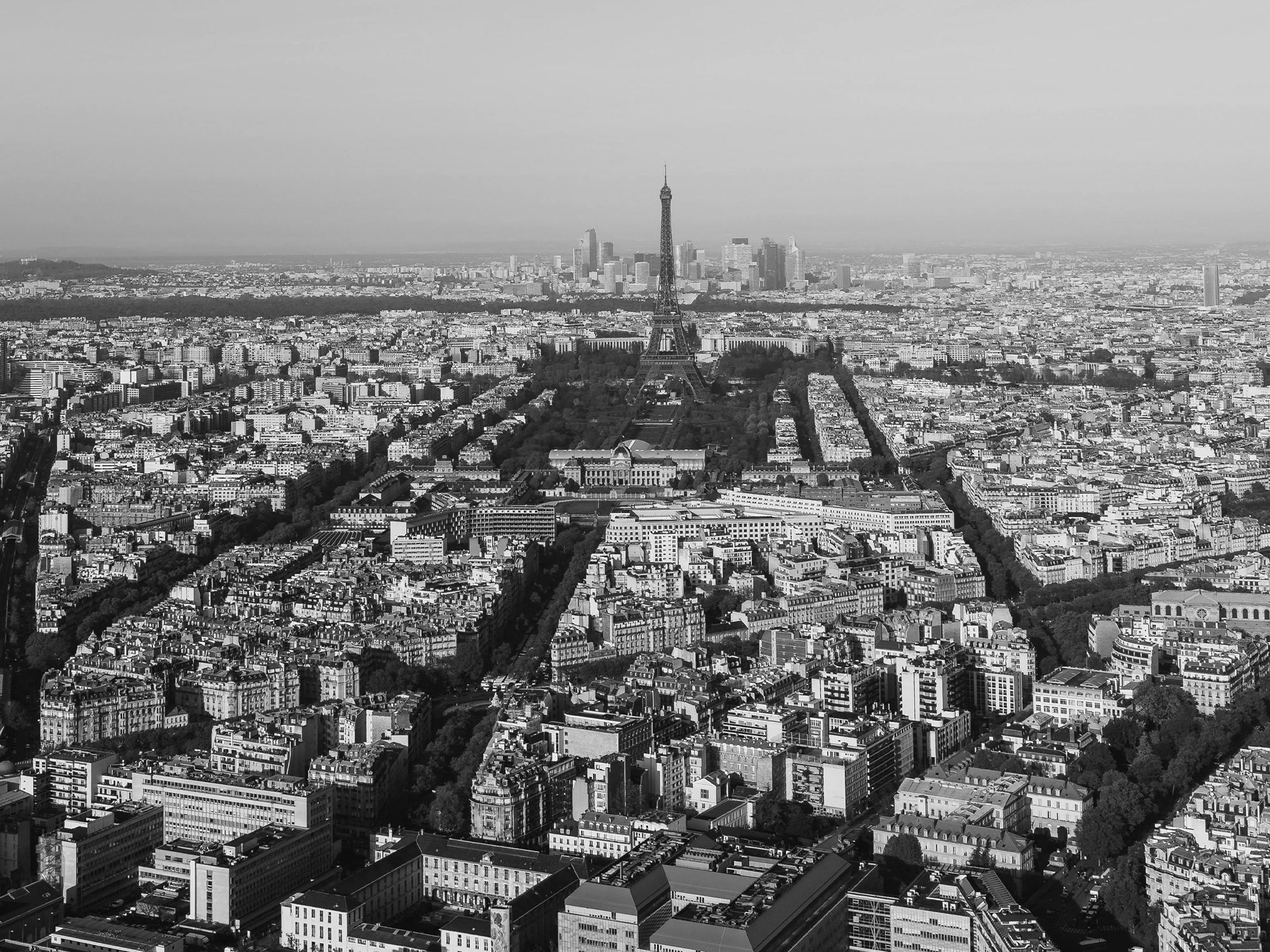
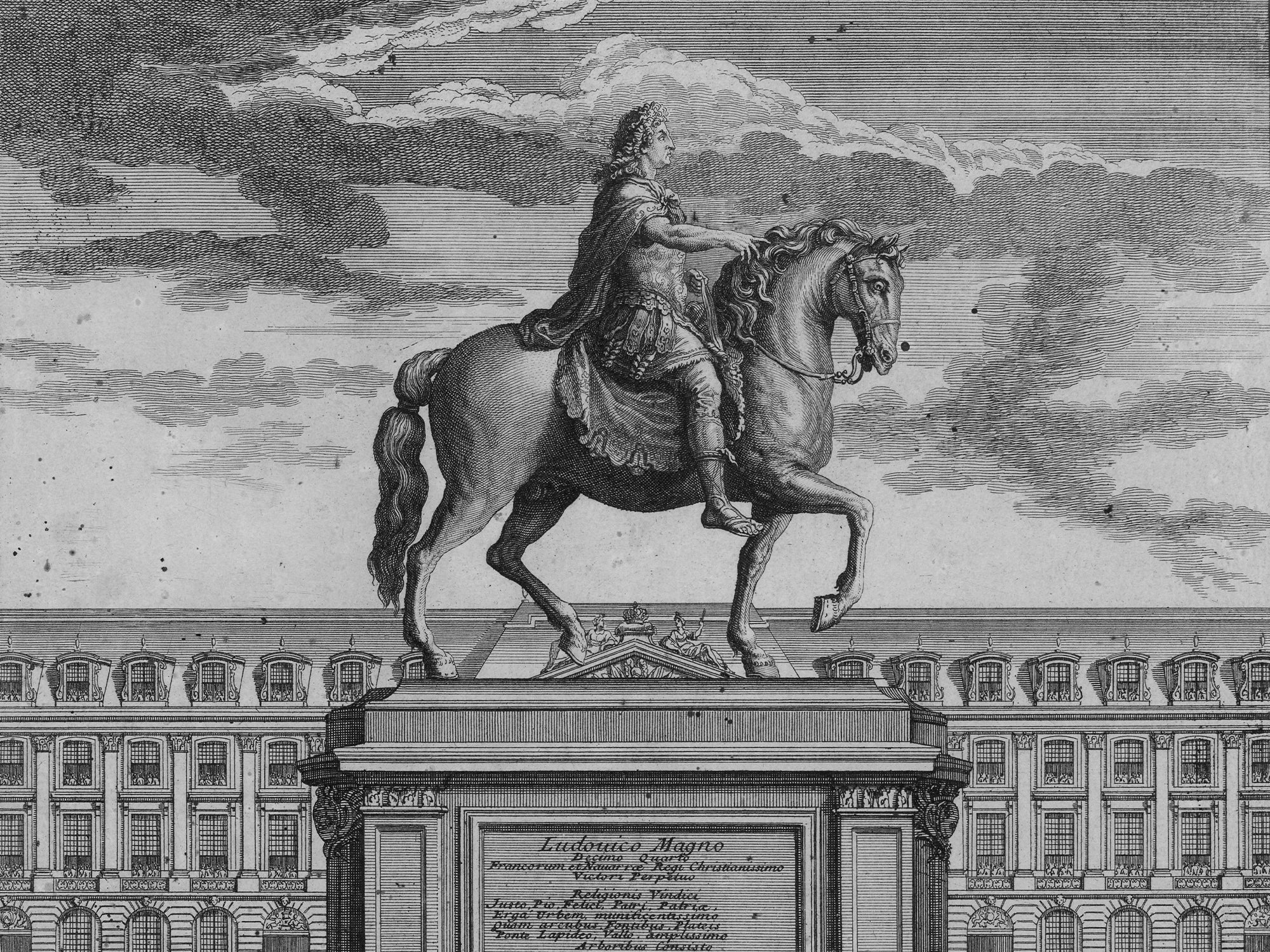
Second Layer
1643
Louis XIV ascends to the throne at five years old and reigns for the next 72 years, with his mother, Anne of Austria, and Cardinal Mazarin governing in his early stead. Paris, still reeling from the Fronde uprisings, sees political tensions as royal power consolidates.
The expansion of the Louvre begins, marking the city's architectural evolution. Economic activity surges, with trade and finance fueling growth. The arts flourish under royal patronage, with literature, ballet, and classical music gaining prominence.
Paris strengthens its role as Europe’s cultural capital, foreshadowing its grandeur under the Sun King's future reign.
Third Layer
1180
Paris flourishes under King Philip Augustus, who strengthens the city’s defenses with the construction of its first fortified walls. The ambitious construction of Notre Dame Cathedral continues, symbolizing the city’s religious and architectural prestige as well as the rise of Gothic architecture.
The expanding population fuels urban growth, with markets, churches, and universities establishing Paris as a center of trade and learning. The Seine River remains vital for commerce, linking Paris to broader European trade networks. Parisian streets bustle with merchants, scholars, and clergy, reinforcing the city’s status as the heart of the Capetian dynasty. Feudal structures define daily life, though the city’s growing influence foreshadows its emergence as France’s political and cultural heart.
Under Philip Augustus, Paris embarks on a path toward modernization, setting the stage for future developments in governance, infrastructure, and education.
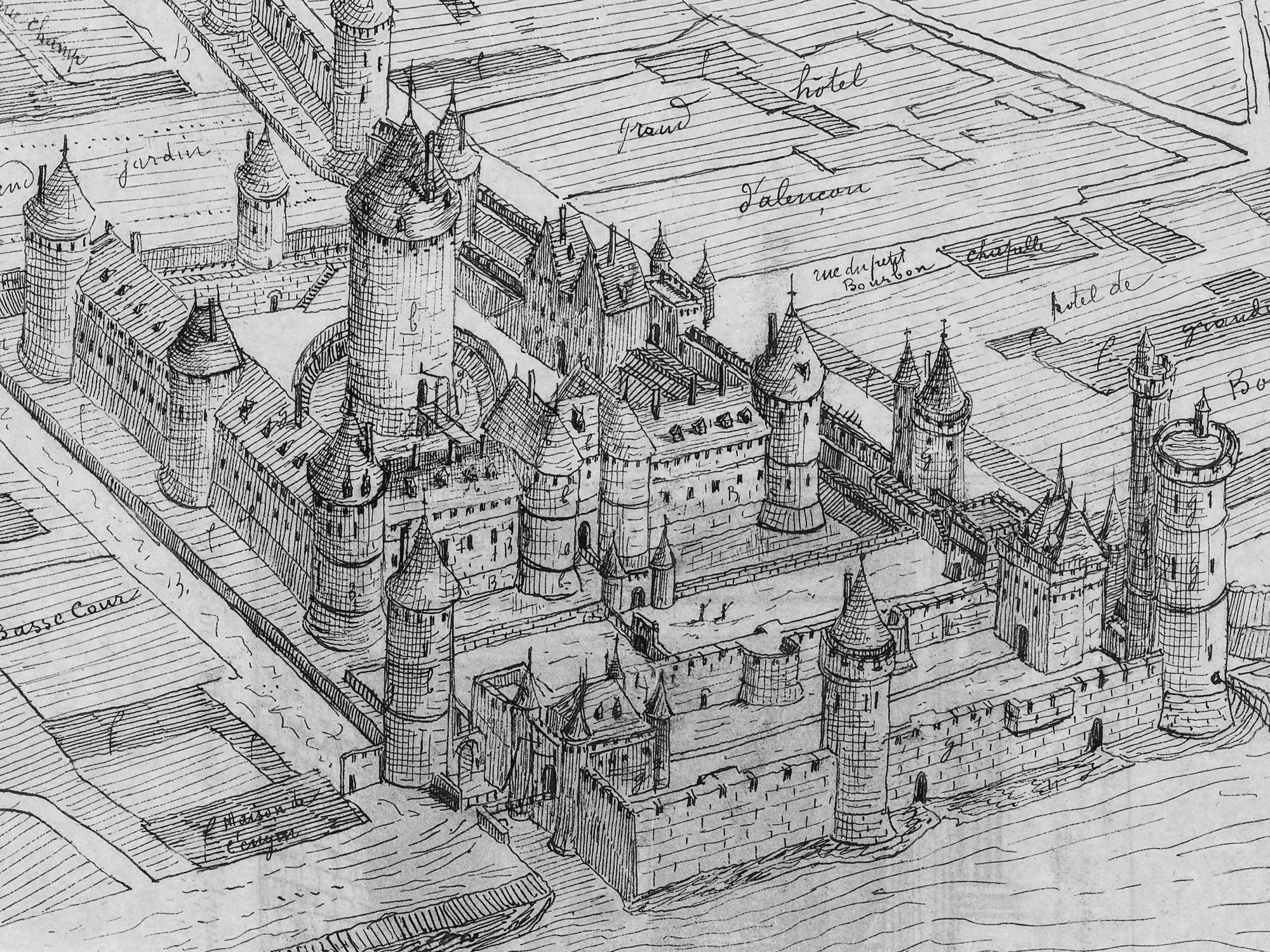
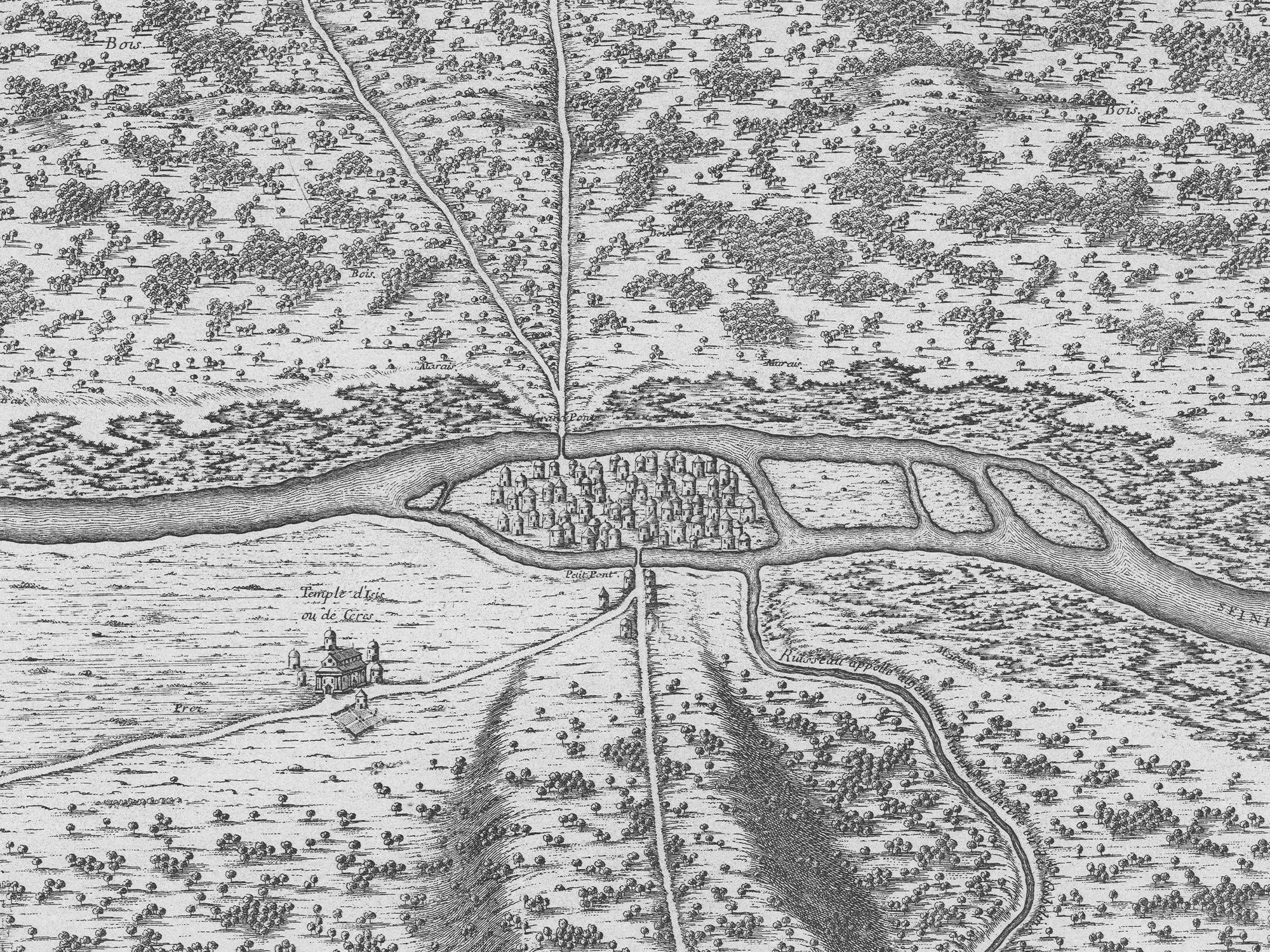
Bottom Layer
360 AD
Paris, then known as Lutetia, thrives under Roman rule as a provincial administrative and trade hub in Gaul. The city features Roman-style baths, temples, and forums, with aqueducts supplying fresh water. Its streets follow organized urban planning, reflecting centuries of Romanization. A diverse population of Roman citizens, soldiers, and local Gallic tribes coexist, shaping daily life and culture. Christianity, still in its early stages, begins to spread, influencing religious practices.
While not yet the grand capital it would become, Lutetia is a flourishing urban center, deeply connected to the broader Roman world.












